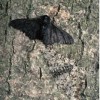
Nathan K. Hensley and John Patrick James, “Soot Moth: Biston Betularia and the Victorian End of Nature”
The darkened form of the common peppered moth, biston betularia f. carbonaria, known colloquially as the “soot moth,” was virtually unknown in England prior to 1800. The first reliable field specimen was collected outside of Manchester in 1848, plucked from the heart of Victorian England’s rapidly expanding coal economy. With their black abdomen and wings, these darkened morphs contrasted starkly with what had once been the more frequent form: a white-bodied moth lightly speckled with black and brown. As scientific studies now show, the black morph appeared as a result of industrial manufacture, first around major production centers and later around London. This article traces those studies to argue that the emergence of this particular form of melanistic moth signals a sharp pivot in Britain’s environmental history: its appearance augurs a new fossil modernity, in which coal replaces wood and animal fats as the primary source of English energy, and as stored sunlight, archived as coal, takes center stage as the driver for an endless steam-powered project of worldmaking. Tracing studies of “industrial melanism” to its origins at the beginning of this extractive, fossil-fueled modernity helps us see the soot moth’s emergence as a watershed moment in the history of life and a new chapter in humankind’s relationship to the category of nature.
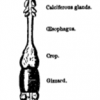
Anna Henchman, “Charles Darwin’s Final Book on Earthworms, 1881”
This article focuses on the publication of Darwin’s final book (1881) in the context of Darwin’s larger attempts to resist the habitual anthropocentrism of human beings. It begins with Darwin’s discussion of animal cognition and the senses of worms. It concludes with his emphasis on the significant effects worm digestion has on the landscape and the fertility of the earth. The article links Darwin’s Worms Edwin Abbott’s 1884 novella Flatland, arguing that both texts are engaged in dismantling human perceptions that stem from possessing a highly visual brain, and that both throw doubt on the belief that a single objective world exists independent of particular observers.
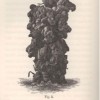
Bryan B. Rasmussen, “Invertebrate Psychology before and after Darwin”
In his B Notebook on Transmutation (1837-38), Charles Darwin speculated that the “introduction of man” on the evolutionary scene was “nothing” compared to the insect, which he considered “the first thinking being.” More than any other class of life in the eighteenth and nineteenth centuries, insects and other invertebrates raised questions about the origins of mental experience and about the relationship between human and nonhuman nature. Their minds represented scientific insight at its limits, where traditional modes of observation and empirical experiment gave way to less certain tools of analogy and thought experiment. Darwin’s Origin of Species (1859) provides a useful historical touchstone for the evolution of these analogies and thought experiments, having constrained the field of plausible analogy from one that included physiology, philosophy, and theology, to the central analogy of common ancestry, or the shared evolutionary history of organisms. However, while Darwin’s theory of descent may have displaced other analogies, it did not replace them, and well into the late-nineteenth and early-twentieth centuries, invertebrate minds continued to inspire a variety of both novel and relic assumptions and methods for examining mental affinities with our spineless distant cousins.
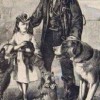
Philip Howell, “June 1859/December 1860: The Dog Show and the Dogs’ Home”
In 1862, the Victorian journalist John Hollingshead (1827-1904) noted the comparability and complementarity of the Dog Show and the Dogs’ Home, both recent innovations: the first true dog show was held in June 1859 and the Temporary Home for Lost and Starving Dogs (now the Battersea Dogs and Cats Home) was founded in December 1860. This article considers these innovations as key events in the culture and treatment of companion animals in Britain, and their contribution to the Victorian “invention” of the dog.
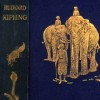
Mario Ortiz-Robles, “Animal Acts: 1822, 1835, 1849, 1850, 1854, 1876, 1900”
What does the history of animal rights have to tell us about Victorian Britain – and how do legislative gains, specifically Parliamentary Acts, appear when read in tandem with theatrical performances and literary depictions of animals? This article reads the former category alongside the latter two, paying particular attention to how artistic representations of animals, including Rudyard Kipling’s The Jungle Book, blur the lines between human and animal behavior. In doing so, it sheds light on how animals were figured as part of a racialized discourse, using Foucault’s notion of biopower to help frame the complex ways animal rights, and animalism, were portrayed in politics and culture.

Susan Hamilton, “On the Cruelty to Animals Act, 15 August 1876”
The Cruelty to Animals Act (15 August 1876) was the world’s first legislation to regulate the use and treatment of live animals in scientific research. This essay overviews the passage and provisions of the legislation, approaching the Cruelty to Animal Act as a site through which to examine the place of animals in clashes between an experimental medical science insisting on its professional and self-regulating status and animal welfare pressure groups that claimed a public right to shape the direction of medical science’s activities.
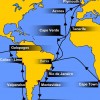
Ian Duncan, “On Charles Darwin and the Voyage of the Beagle”
The event now known as “the voyage of the Beagle” comprises Charles Darwin’s circumnavigation as ship’s naturalist on the second of three surveying voyages by H.M.S. Beagle; the writings published as his first book, the Journal of Researches; and the genesis of his theory of evolution by natural selection. Writing between regimes of world-knowledge, Darwin mediates scientific observation through the language of aesthetics, and seeks to understand the convergence of disparate scales of geological and human history.
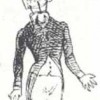
Jo Briggs, “1848 and 1851: A Reconsideration of the Historical Narrative”
The revolutionary year of 1848 has been seen as producing little effect on art in Britain. However, the turn to visual culture, which considers a broad spectrum of material including prints, illustrated periodicals, advertisements and other popular and ephemeral forms of visual production, allows this assumption to be rethought. By decentralizing the notion of an originary moment of formal innovation among a select group of avant-garde painters, as has been emphasized with regard to Paris, and turning to British visual culture, the effects of revolution become diffuse and plural. As a result, chronologies need to be rethought, and the revolutions of 1848 and the Great Exhibition of the Work of Industry of All Nations of 1851 reconnected.
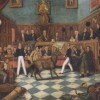
Ivan Kreilkamp, “The Ass Got a Verdict: Martin’s Act and the Founding of the Society for the Prevention of Cruelty to Animals, 1822”
This article presents the history and pre-history of Martin’s Act (1822), “Act to prevent the cruel and improper treatment of Cattle,” and the subsequent founding, in 1824, of the Society for the Prevention of Cruelty to Animals (after 1840, the Royal Society for the Prevention of Cruelty to Animals). It explains and analyzes the late-eighteenth-century and early-nineteenth-century context in which the animal welfare or anti-cruelty movement emerged. It also discusses the failed 1809 Act proposed by Lord Erskine and Richard Martin’s successful 1822 Act, and analyzes the particular role played by ridicule and shifting boundaries of humor in the discourse surrounding human treatment of animals.
